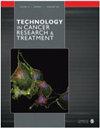Predictive Value of NLR and PLR in Driver-Gene-Negative Advanced Non-Small Cell Lung Cancer Treated with PD-1/PD-L1 Inhibitors: A Single Institutional Cohort Study
IF 2.7
4区 医学
Q3 ONCOLOGY
引用次数: 0
Abstract
ObjectiveTo investigate the predictive value of neutrophil-to-lymphocyte ratio (NLR) and platelet-to-lymphocyte ratio (PLR) for the efficacy and prognosis of programmed cell death-1 (PD-1)/programmed cell death-ligand 1 (PD-L1) inhibitors in driver-gene-negative advanced non-small-cell lung cancer (NSCLC).MethodsA retrospective analysis of 107 advanced NSCLC patients without gene mutations who received PD-1/PD-L1 inhibitors in our hospital from January 2020 to June 2022 was performed. NLR and PLR were collected before PD-1/PD-L1 inhibitors, the optimal cut-off values of NLR and PLR were determined according to the receiver operating characteristic (ROC) curve, and the effects of NLR and PLR on the efficacy of PD-1/PD-L1 inhibitors in advanced NSCLC patients were analyzed.ResultsA total of 107 patients were included in this study. Receiver operating characteristic analysis showed that the optimal cut-off values of NLR and PLR were 3.825, 179, respectively. Kaplan–Meier curve showed that low baseline levels NLR and PLR were associated with an improvement in both progression-free survival (PFS) ( P < .001, < .001, respectively) and overall survival (OS) ( P = .009, .006, respectively). In first-line treatment and non-first-line treatment, low baseline levels NLR and PLR were associated with an improvement in PFS. In multivariate analysis, low baseline NLR and PLR showed a strong association with both better PFS ( P = .011, .027, respectively) and longer OS ( P = .042, .039, respectively).ConclusionLow baseline NLR and PLR levels are significantly associated with better response in advanced NSCLC patients treated with PD-1/PD-L1 inhibitors, which may be indicators to predict the efficacy of immunotherapy in advanced NSCLC with driver-gene-negative.PD-1/PD-L1抑制剂治疗驱动基因阴性晚期非小细胞肺癌的NLR和PLR预测价值:一项单一机构队列研究
目的 探讨中性粒细胞与淋巴细胞比值(NLR)和血小板与淋巴细胞比值(PLR)对驱动基因阴性晚期非小细胞肺癌(NSCLC)程序性细胞死亡-1(PD-1)/程序性细胞死亡配体 1(PD-L1)抑制剂疗效和预后的预测价值。方法对2020年1月至2022年6月在我院接受PD-1/PD-L1抑制剂治疗的107例无基因突变的晚期NSCLC患者进行回顾性分析。在使用PD-1/PD-L1抑制剂前收集NLR和PLR,根据接收者操作特征曲线(ROC)确定NLR和PLR的最佳临界值,并分析NLR和PLR对晚期NSCLC患者使用PD-1/PD-L1抑制剂疗效的影响。接收者操作特征分析显示,NLR和PLR的最佳临界值分别为3.825和179。Kaplan-Meier曲线显示,低基线水平的NLR和PLR与无进展生存期(PFS)(P = .001,P = .001)和总生存期(OS)(P = .009,P = .006)的改善相关。在一线治疗和非一线治疗中,低基线水平的NLR和PLR与PFS的改善有关。结论基线NLR和PLR水平较低与PD-1/PD-L1抑制剂治疗的晚期NSCLC患者较好的反应显著相关,这可能是预测驱动基因阴性的晚期NSCLC免疫疗法疗效的指标。
本文章由计算机程序翻译,如有差异,请以英文原文为准。
求助全文
约1分钟内获得全文
求助全文
来源期刊
CiteScore
4.40
自引率
0.00%
发文量
202
审稿时长
2 months
期刊介绍:
Technology in Cancer Research & Treatment (TCRT) is a JCR-ranked, broad-spectrum, open access, peer-reviewed publication whose aim is to provide researchers and clinicians with a platform to share and discuss developments in the prevention, diagnosis, treatment, and monitoring of cancer.

 求助内容:
求助内容: 应助结果提醒方式:
应助结果提醒方式:


